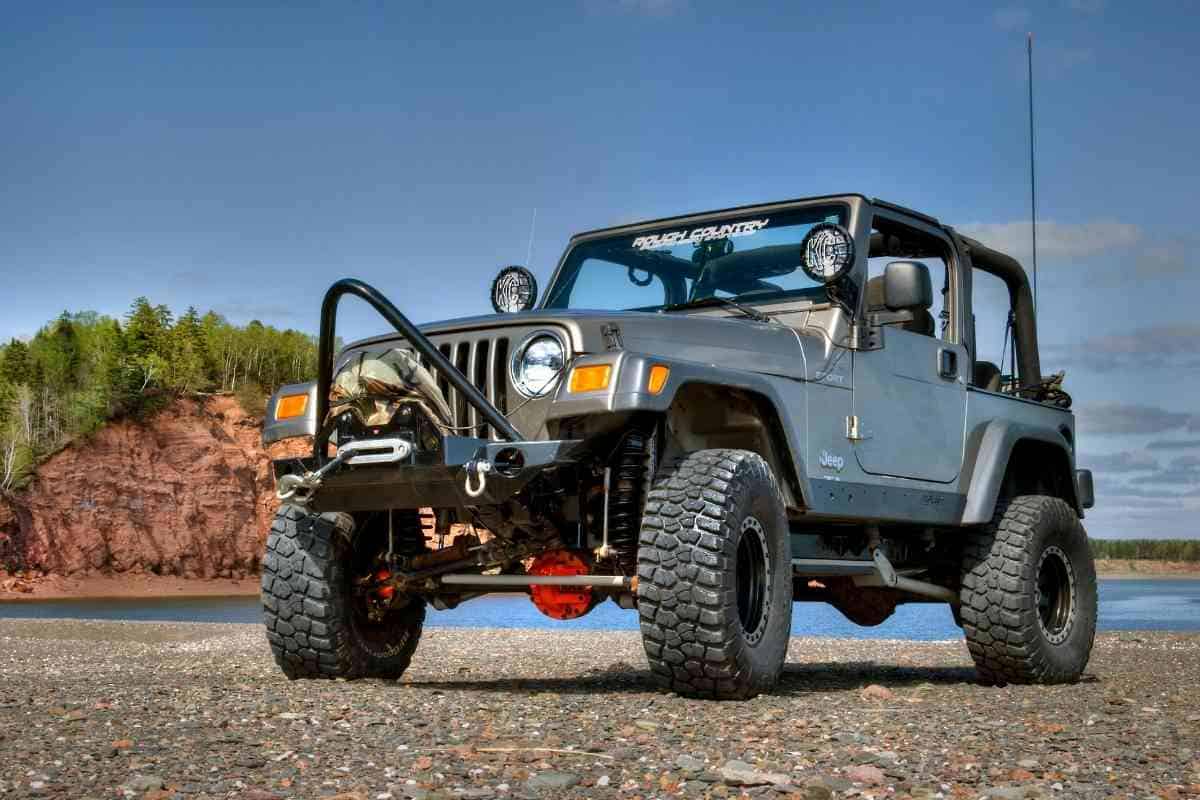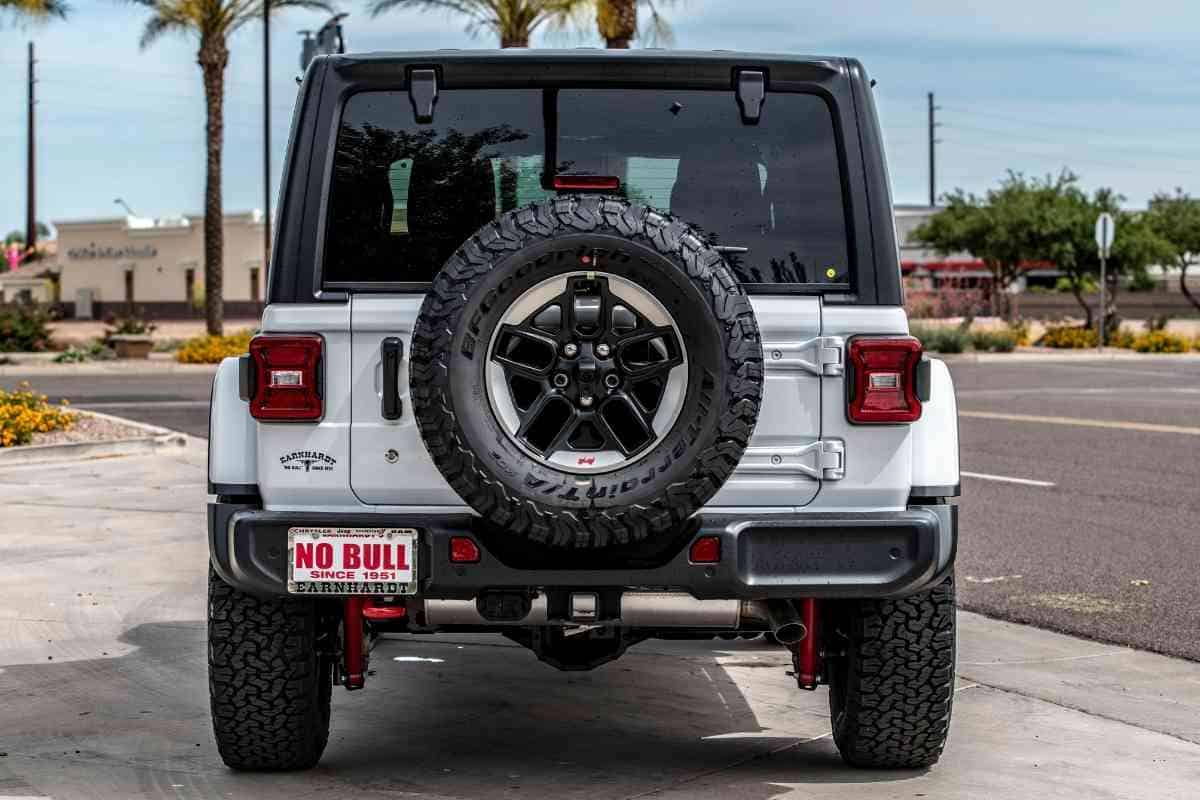Do I Need To Regear My Jeep With 35-Inch Tires?
Regearing is the important process of providing your Jeep with the right balance of torque and speed. When getting bigger tires for your Jeep, do you need to regear the vehicle? Changing the size of tires in your Jeep can mean a few mechanical changes as well as modifications to how the Jeep drives.

Do I need to regear my Jeep to fit 35-Inch tires?
While you don’t need to regear your Jeep when adding 35” tires, you might want to seriously consider doing it anyway. Your Jeep probably won’t perform like it used to with bigger, heavier tires with a longer rotation.
We’ll discuss what regearing does, and how your Jeep will respond to 35” tires being installed. Upgrading tire sizes can have interesting impacts on how your vehicle drives.
Having worked with big tires before, we know a bit about them. We’ll help find some research on what it means to regear from good sources, too.
What does regearing do?
Your gear ratios tell you how many times your driveshaft needs to rotate to complete turn your wheels one time. A higher gear ratio, like 4.88 vs 4.1, will cause your engine to have to work harder to maintain the same number of rotations per minute. The result is using more fuel and less performance.
Why would I regear my Jeep with 35” tires?
When driving off the lot new, Jeeps are designed to balance torque and speed. Depending on the model and your choices, your Jeep might be geared for highway travel at high speeds – which usually involves making the engine do the least amount of work as possible between 60 and 70 miles per hour.
The opposite is often needed for driving off-road or over rocks. You’ll want more torque to get over obstacles without the need to drive fast.
Regearing helps the Jeep, and the driver, find the right gear for the moment. A Jeep with newly installed 35” tires will have more resistance and could use a change in gears to get the most fuel economy and performance.
Many drivers report that after getting larger tires, their vehicle feels like it has a slower top-end speed. That’s because the engine and transmission are working harder to achieve the same speed.
Things to know if you regear your Jeep with 35” tires
Let’s say that after a few trips out in your Jeep with 35” tires you discover that you don’t like the way it drives. Getting on the freeway is a bit more difficult because it won’t accelerate as fast as it used to.
Regear the front and rear axles at the same time
We suggest this because it is possible, though not advisable to regear only one axle at a time. Not completing the process of regearing both axles can result in damage to the transfer cause because the driveshafts are moving at different speeds.
You could break an axle, a driveshaft, or generally wear the mechanics on your Jeep out much faster than normal. The result is probably pretty expensive – and not very fun!

What should I do after regearing?
You’ll want time for your newly changed gears to get broken in, and this requires some maintenance. There is a good chance you’ll want to do some adjusting in the first few hundred miles after you first regear, just to get things just right.
After you’ve driven a ways (and avoided going off-road yet!) you’ll want to replenish and change your differential fluid because you’ll probably have debris.
Can regearing save money?
It most certainly can! While there is often a cost to an initial regear, it should pay for itself relatively quickly – especially compared to other modifications you might make to your Jeep! Regearing will allow your Jeep will let your engine not work as hard using those 35” tires, and you’ll see some immediate savings in fuel economy.
The idea behind regearing is to keep your Jeep engine from revving too near the redline just to get to highway speeds. Anything above 3000 RPM tends to burn more gas than it needs to, so it’s a matter of finding the sweet spot between speed and gears.
How do I know my current gear ratio?
If you didn’t buy your vehicle new and aren’t sure if a previous owner changed gears themselves – even a little bit, the easiest way to check is with some jackstands and a few minutes. Raise your Jeep with the jackstands, including the rear axle so it can move.
Put the Jeep into neutral. From underneath the Jeep, rotate the driveshaft and see how many rotations of the driveshaft it takes for a complete wheel turn.
Pay close attention! The number could include a quarter, half, or three-quarter turn.
Are gear charts available?
Knowing how to set up your gearbox isn’t exactly common knowledge, though this source does a good job laying out what gears you will need based on tire size.
How long does regearing take?
If you do it on your own, it should take you a couple of days’ worth of hours. Unless you have the tools and lift necessary, we might suggest bringing the Jeep and fresh gears to a dealership. They often have done it before and are less likely to cause a problem.
It might take a day or two to complete – and a few dollars, but it’ll be worth the peace of mind of knowing it was done right.
Is regearing dangerous?
Not especially, if you do it right. The largest chance of problems actually comes from your wallet. Your Jeep will wear down faster if it’s not regeared properly – and with both axles at the same time.
Do I need anything else?
We recommend getting a tuner that can plug into your Jeep. The tuner can recalibrate your speedometer and modify your shift points. This is useful just to make sure your Jeep is running right and it’s pretty easy to do.
When should I consider regearing?
The first sign that you want to regear will likely come after filling up your tank – or watching your gas gauge go down faster than normal when driving at high speeds with 35” tires. Another sign is that your vehicle can’t keep up with traffic the way it used to.
An improperly geared Jeep is not a fun daily driver.
What does the process of regearing involve?
Regearing involves actually replacing the existing gears on your vehicle. You can’t often modify what you currently have, so the vehicle will be at least partially taken apart for the purpose of putting new gears into place.
